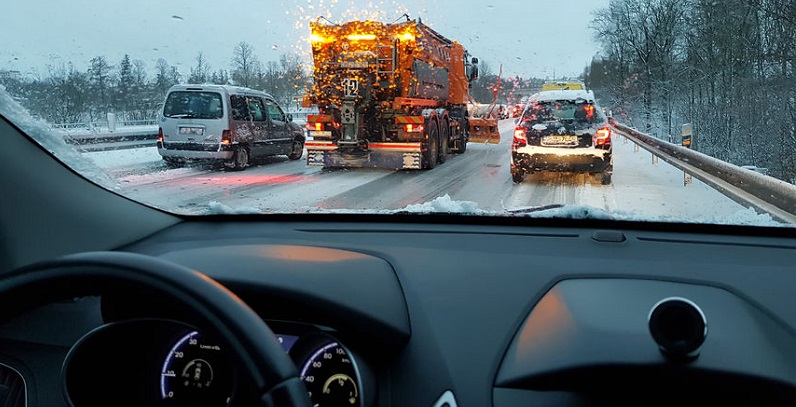Last year, Colorado was dubbed the 34th-safest state for driving in the snow.
How You Can Avoid Injury and Stay Safe While Driving in Colorado
According to the American Automobile Association (AAA), winter storms, inclement weather, and dangerous road conditions are a factor in nearly half a million auto accidents and more than 2,000 deaths in the United States each winter.
Last year, Colorado was dubbed the 34th-safest state for driving in the snow. Although winter weather can be dangerous for Colorado motorists, most people don’t have the luxury of staying off the roads when ice and snow make traveling tough.
Keep Aware of Road Conditions
Using some basic safe-driving techniques can help you get where you are going as safely as possible.
- If you warm up your vehicle before heading out, pull it out of the garage (or any enclosed area) to avoid carbon monoxide poisoning.
- If you leave your car running while it is unoccupied, be sure to keep the doors locked.
- Carry extra food, water, warm clothing, a flashlight, a window scraper, blankets, and medications in your car in case of emergency.
- Make sure that your tires are properly inflated.
- Don’t let your fuel tank drop to less than half a tank at any time.
- Avoid using cruise control on slippery road surfaces.
- As you approach an icy hill, try to develop some momentum on the flat roadway first, and never stop halfway up. You may well find it very hard to get going again.
Know Colorado’s Laws
Two important state laws help keep traffic moving when roads are icy, snowy, and slushy. The traction law requires drivers on I-70 between Dotsero and Morrison to be equipped with snow tires or tires with a mud and snow designation or to be operating a vehicle with four-wheel drive. The traction law also requires all tires to have a minimum tread of one-eighth of an inch.
The chain law requires that from September 1 to May 31, every commercial vehicle traveling on I-70 between mileposts 133 and 259 have chains or an alternative traction device. The chain law also applies to passenger vehicles whenever weather conditions are considered severe.
Preparing for Long Road Trips
If you are planning a long-distance winter trip, AAA offers the following tips.
- Have your vehicle checked before you leave.
- Check the weather before you start and periodically en route. If bad weather is on the way, delay your trip if possible.
- In order to see and be seen, clear all snow and ice from your vehicle, including the hood, roof, trunk, lights, and windows.
- If you get stuck in the snow, don’t try to walk away from your vehicle. It’s your temporary shelter, and remaining with the vehicle makes it easier for someone to see you.
- If you become stranded and must run the engine to stay warm or charge your phone, do so for only 10 to 15 minutes each hour in order to conserve as much fuel as possible.
- Before hitting the road, always notify others of your route, destination, and estimated time of arrival.
If you or a loved one has been injured in an auto accident, contact Colorado personal injury attorney Dan Rosen at (303) 454-8000 or (800) ROSEN-911 to schedule your free initial consultation.

